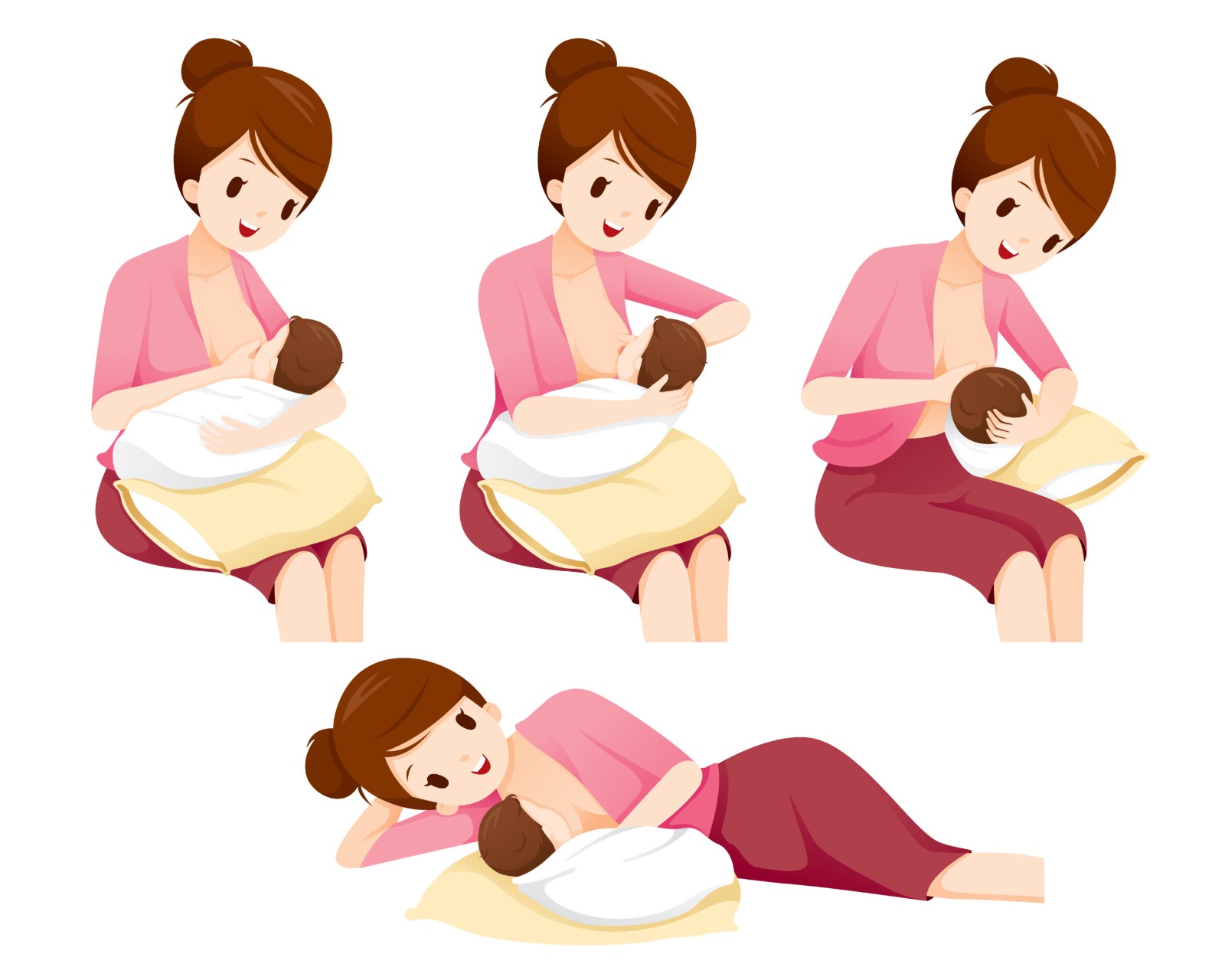Health Literacy around Breast Feeding needs to improve for better child health:
Breastfeeding stands as a potent elixir in a world filled with both the limitless beauty and perplexing hardships of parenthood. Although breastfeeding is a timeless practice with myriad benefits for the vulnerable souls of both mother and child, it is shrouded in the misperceptions and hurdles of the modern world, which pose a threat to this amazing gift of nature. Herein lies the role that breastfeeding-related health literacy plays.
Health literacy needs to be elevated with reference to breastfeeding in order to ensure better child health. Breastfeeding offers manifold benefits for both the mother and her child, including disease prevention and a reduction in infant mortality. However, there are a number of impediments and misconceptions that contemporary mothers must deal with that may hinder them from practising optimum nursing. Therefore, the objective is to disseminate accurate information that is essential for increasing breastfeeding rates while also providing guidance on effective nursing practices. By discrediting misconceptions and providing support, we might encourage mothers to embrace breastfeeding for the benefit of their children’s health.
Breastfeeding: Acknowledging its worth –
Breastfeeding holds immense value in safeguarding a child’s health and development. Human milk provides newborns with a nutritious diet, fosters robust growth, and guards against a range of viral and chronic illnesses, all of which might lower infant death rates. The perks of breastfeeding are plentiful, encompassing the prevention of stunting, disease prevention, and overall well-being for both a mother and her child. Furthermore, it contributes to reducing maternal perils like breast and ovarian cancer incidences while encouraging lactational amenorrhea.
The Breastfeeding Journey of Indian Mothers: What the numbers say –
Breastfeeding is essential for supporting the health of both mothers and infants since it offers a balanced diet for healthy development, protects against diseases, and lowers death rates. It is imperative to improve health literacy in this area in order to obtain better child health outcomes.
Despite the numerous advantages conferred by breastfeeding, Indian mothers encounter barriers and erroneous ideas that encourage less-than-ideal practices. Exclusive breastfeeding rates differ across regions, with the Northeast having a rate of 68.0% and the South having a rate of 79.2%. However, only 65% of newborns under the age of six months are exclusively breastfed nationwide.
Breastfeeding awareness remains a concern, with only 68% of mothers acknowledging its essential role. Research conducted in the eastern region of India found that incorrect breastfeeding practices are prevalent, with only 53% of mothers exclusively breastfeeding their infants. The study also revealed that just 23% of women knew about the World Health Organisation’s recommendation to start breastfeeding within the first hour of giving birth. The research additionally suggested that breastfeeding practices are influenced by the mother’s age, education, and employment status, with working and educated mothers exhibiting greater awareness.
Regrettably, this low prevalence of exclusive breastfeeding can be attributed to various factors, including societal and cultural pressures, a lack of awareness, and prevailing misconceptions pertaining to breastfeeding. Moreover, some mothers might erroneously believe that: they do not produce sufficient breast milk, they do not get enough sleep or family support when breastfeeding, or they might find nursing painful, inclining them to opt for formula feeding. Furthermore, the diminution in breastfeeding rates may be impacted by misconceptions propagated on social media or by dubious sources.
The Realities of Breastfeeding: Beyond Movie Portrayals –
Emphasis should be placed on the fact that nursing is not always as effortless and instinctive as it is portrayed in movies and the media. To establish a fruitful breastfeeding relationship between a mother and her child, mothers need to be patient, persistent, and occasionally seek expert guidance. However, many women struggle with challenges including latch issues, engorgement, or inadequate milk production. Acknowledging these barriers and seeking appropriate support are the crucial initial steps in sustaining healthy breastfeeding.
Fostering Optimal Breastfeeding: Appreciating Individualistic Strategies –
The success of breastfeeding depends on proper positioning and latching, which contribute to preventing problems like sore nipples and discomfort. Health professionals, such as doctors and competent nurses, are essential in informing mothers about the proper placement and handling any potential breastfeeding issues. Early initiation and bonding are equally important, as skin-to-skin contact after birth and the breast crawl facilitate lactation and foster a strong bond between the mother and her baby. Early breastfeeding commencement has been associated with enhanced nursing outcomes. Additionally, infant alertness and healthy rooting and sucking reflexes are additional elements that have a significant impact on the efficacy of breastfeeding.
Overcoming Hurdles and Ambiguities: Combating Community Challenges –
Breastfeeding provides a plethora of benefits; however, some parents may experience hardships that might force them to the introduction of prelacteal feeds or early cessation due to perceived insufficient breastmilk supply. The World Health Organization’s Network for Global Monitoring and Support for Implementation of the International Code of Marketing of Breast-milk Substitutes (NetCode) actively works to combat inappropriate marketing of breast-milk substitutes. Proper education and support are pivotal in addressing these concerns. Healthcare professionals should be knowledgeable about the effects of medication during breastfeeding to make appropriate adjustments, as complete cessation is rare. WHO’s training prepares health workers to provide support to breastfeeding mothers, help them overcome challenges, and monitor infant growth.
Please take note that efforts to encourage breastfeeding collectively are essential to enhancing nursing practice. Multilevel interventions across the socioecological model must be put into place to improve breastfeeding practices. Promoting effective breastfeeding necessitates acknowledging gender disparities and embracing collaborative cultural responses.
Focused Initiatives to Increase Health Literacy: Addressing the Dichotomy –
The literacy level of mothers has a crucial role to play in shaping their breastfeeding practices. The results of a study carried out in Tamil Nadu, India’s semi-urban region, revealed that maternal literacy was linked to improved overall breastfeeding practises. However, it turned out that there was a complex association between literacy and several elements of nursing. This emphasises the need for focused health literacy programmes that address the specific challenges endured by moms with varying literacy levels.
The World Health Organisation fervently promotes breastfeeding and aspires to reach a 50% rate of first-six-months-exclusive breastfeeding by 2025. The Global Breastfeeding Collective, a collaboration between WHO and UNICEF, promotes breastfeeding through political, legal, financial, and public channels. Hence, improving health literacy is crucial for closing breastfeeding practice discrepancies and achieving better child health outcomes. The necessity of exclusive breastfeeding and early initiation must be widely publicised. Potential avenues for promoting breastfeeding and improving child health include programmes like the Baby-Friendly Hospital Initiative (BFHI) and the Baby-Friendly Community Initiative (BFCI).
The Baby-Friendly Hospital Initiative is a global endeavour led by WHO and UNICEF that encourages breastfeeding best practices in maternity care. The programme’s objective is to support and encourage breastfeeding from conception, and its successful implementation calls for political backing at the federal level, unambiguous leadership, legislation, funding, and policy-making. In addition, by emphasising local breastfeeding support, the Baby-Friendly Community Initiative complements the BFHI. These initiatives have the potential to substantially enhance child welfare across the globe and pave the way for breastfeeding to have a brighter future.
The author is Periodontal Surgeon and Health Educator with The Healthy Indian Project, A Health Literacy Platform























